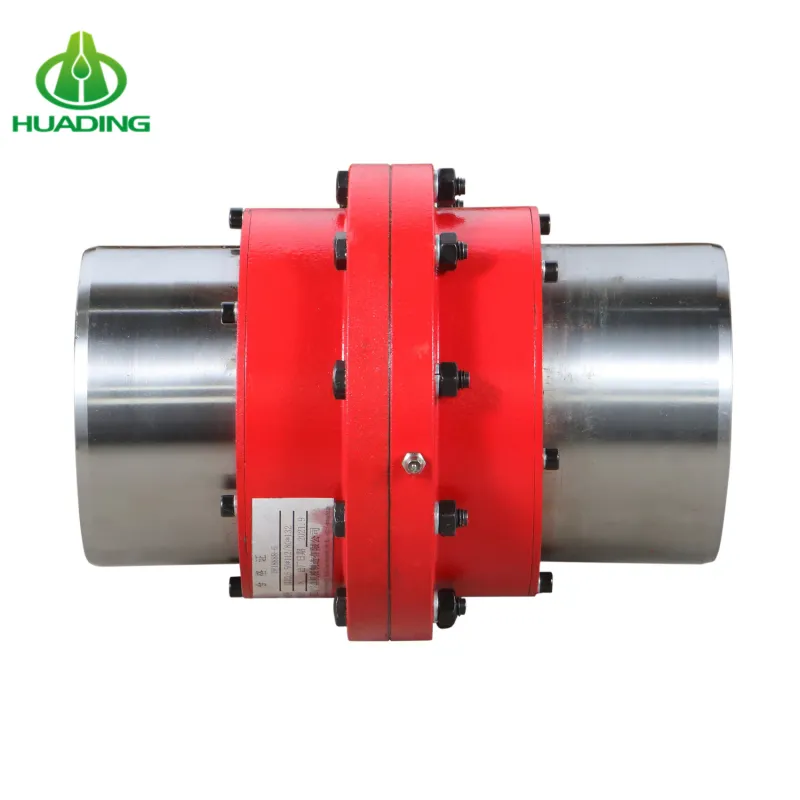Types, characteristics and uses of couplings
As an important component in mechanical transmission, couplings are widely used in various types of mechanical equipment to connect two shafts or shafts with rotary parts to transmit torque and rotary motion. According to the different structure, working principle and application, couplings can be divided into many types, each type has its own unique characteristics and uses. This article will introduce the types, characteristics and uses of couplings in detail, in order to provide reference for mechanical design and selection.
First, the type of coupling
There are many types of couplings, which can be divided into various types according to different classification standards. The following are the common classification methods and corresponding coupling types:
Classified according to structural characteristics:
Rigid coupling: such as expansion coupling, simple structure, low cost, but lack of relative displacement compensation ability, requiring the two shafts to be connected to have high alignment.
Elastic couplings: such as diaphragm couplings, connecting rod couplings, with the ability to compensate for axial, radial and angular offsets, suitable for occasions that require shock absorption and noise reduction.
Liquid coupling: using fluid to transmit power, with smooth transmission, no noise, no impact and other characteristics.
Smooth coupling: Friction transmission principle, suitable for applications that require precise transmission and small space.
Categorized by working principle:
Friction couplings: Torque is transmitted by friction, such as friction plate couplings.
Flexible coupling: use the deformability of elastic elements or metal diaphragms to compensate for the deviation between two shafts, such as diaphragm couplings, elastic sleeve pin couplings.
Gear coupling: transmits power through gears, suitable for high-power transmission and high-speed rotation occasions, such as spur gear couplings and helical gear couplings.
Classification by application:
Universal coupling: suitable for general mechanical transmission, such as pin coupling, elastic pin coupling.
Special couplings: couplings designed for specific machinery or equipment, such as universal couplings (used to transmit rotation in different directions or when two shafts are misaligned), safety couplings (when the transmitted torque exceeds a certain value, it can automatically slip to protect the shaft system from damage).

Second, the characteristics of the coupling
Different types of couplings have different characteristics, which determine their suitability for different occasions.
Rigid couplings:
The structure is simple, easy to manufacture and low cost.
The transmission torque is large and the efficiency is high.
The centering requirements are high, and it is not suitable for occasions where there is a relative displacement between two axes.
Flexible couplings:
It has good shock absorption and noise reduction performance.
Axial, radial and angular deviations between two axes can be compensated.
The carrying capacity is relatively weak, and it is suitable for small and medium power transmission.
Liquid Couplings:
Smooth transmission, no noise, no impact.
It is suitable for high-power, high-speed transmission occasions.
The maintenance cost is high and requires regular inspection and maintenance.
Smooth couplings:
Friction transmission, suitable for precision transmission and small space occasions.
The transmission efficiency is low and it is easy to wear.
Cardan coupling:
It can transfer power between two axes while allowing for a certain angle of deviation.
The structure is complex and the manufacturing cost is high.
It is suitable for transmitting rotations in different directions or connecting two shafts that are misaligned.
Third, the use of the coupling
Couplings play a vital role in mechanical transmission, and their use is wide-ranging, covering all kinds of mechanical equipment and transmission systems.
Connecting two shafts: A coupling can connect two shafts together to achieve the transmission of torque and rotary motion. This is the most basic and common use of couplings.
Compensate for deviations between two shafts: In mechanical transmissions, there may be axial, radial and angular deviations between two shafts due to various reasons during manufacturing, installation or operation. Couplings with compensating ability, such as elastic couplings and universal couplings, can solve this problem well and ensure the stability and reliability of transmission.
Vibration and noise reduction: Vibration and noise are unavoidable problems in high-speed, heavy-duty drivetrains. Couplings with shock absorption and noise reduction functions, such as elastic couplings, can effectively reduce vibration and noise levels, and improve the working performance and comfort of equipment.
Protect the shafting: Special types of couplings, such as safety couplings, can automatically slip or disconnect when the transmitted torque exceeds a certain value, thus protecting the shafting from damage. This coupling is particularly important in harsh conditions such as heavy loads, shocks or sudden failures.
Adaptable to special working conditions: Couplings can also be specially designed and customized according to different applications and needs. For example, couplings used in marine, aerospace and other fields need to withstand extreme environmental conditions and complex working conditions; Couplings used in precision machinery and automation systems need to be characterized by high precision, high stability and high reliability.
epilogue
As an important component in mechanical transmission, couplings have a variety of types, characteristics and uses. In the process of mechanical design and selection, the appropriate coupling type and specification should be selected according to the performance requirements of the equipment, working environment and transmission conditions. At the same time, attention should also be paid to regular inspection and maintenance of the coupling during use to ensure its long-term stable operation and prolong service life.

